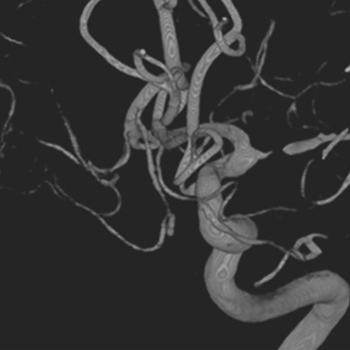Keywords
Confusional state, magnetic resonance imaging, moyamoya disease
Abstract
A 54-year-old woman was admitted to the emergency department for an acute, fluctuating altered mental status and reduced perceptual awareness of her surroundings as well as disorganized thinking. Blood tests, including for drugs, were normal. A CT scan of the brain was normal. Magnetic resonance imaging and CT angiography of the supra-aortic vessels were both were consistent with moyamoya disease. The patient was hospitalized for further investigations.
References

Views: 741
HTML downloads: 51
PDF downloads: 338
Published:
2021-03-17
Issue:
2021: Vol 8 No 3
(view)










